The James Webb Space Telescope: A New Look at Jupiter
The JWST's infrared detectors give us new, very detailed images of Jovian rings, satellites, and auroras...and a taste of what's next.
The James Webb Space Telescope (JWST) is now the premier space observatory for the next decade. This mission is an international collaboration between NASA, the European Space Agency (ESA), and the Canadian Space Agency (CSA), and will serve thousands of astronomers worldwide. It will study every phase in the history of our Universe, ranging from the first luminous glows after the Big Bang, to the formation of solar systems capable of supporting life on planets like Earth, to the evolution of our own Solar System.
As we reviewed in “On the Way Up: How the James Webb Space Telescope Will Use Infrared to Study the Early Universe, ” we saw that these goals will be accomplished by observation in near-infrared light rather than light in the visible part of the spectrum. For this reason, JWST’s instruments will not measure visible or ultraviolet light like the Hubble Telescope but have a much greater capacity to perform infrared astronomy.
Now launched and operational, data from the JWST commissioning period is now being shared. The data includes images of Jupiter, which demonstrates Webb’s ability to track solar system targets and produce images and spectra with unprecedented detail.
A Look at Jupiter with New Eyes
Scientists were especially eager to see these images because they are proof that Webb can observe the satellites and rings near bright solar system objects such as Jupiter, Saturn, and Mars. Scientists will use Webb to explore the tantalizing question of whether we can see plumes of material spewing out of moons like Europa, and Saturn’s moon, Enceladus.
The two images come from Webb’s Near-Infrared Camera (NIRCam), which has three specialized infrared filters revealing details of the planet. Since infrared light is invisible to the human eye, the light has been mapped onto the visible spectrum. Generally, the longest wavelengths appear redder, and the shortest wavelengths are shown as more blue. Scientists collaborated with citizen scientist Judy Schmidt to translate the Webb data into images.
ERS 1373 was one of the first efforts of the Early Release Science program, designed to provide the exoplanet research community with robust Webb data as soon as possible: “ERS observations of the Jovian System as a demonstration of JWST’s capabilities for Solar System science” Though much, much closer than the type of objects JWST was designed to image, it was a perfect opportunity to see one of the largest and brightest objects in the Solar System along with very faint targets next to it. Measurements will look at absorption bands and the accuracy of imaging on very small features such as Io’s volcanoes.
Specific imaging goals of the project include:
- characterization of Jupiter’s cloud layers, winds, composition, auroral activity, and temperature structure
- mapping of the atmosphere and surface of volcanically-active Io and icy Ganymede
- Description of the planet’s ring structure, and its sources and evolution.
In the standalone view of Jupiter, created from a composite of several images from Webb, auroras extend to high altitudes above both the northern and southern poles of Jupiter. The auroras shine in a filter that is mapped to redder colors, which also highlights light reflected from lower clouds and upper hazes. A different filter, mapped to yellows and greens, shows hazes swirling around the northern and southern poles. A third filter, mapped to blues, showcases light that is reflected from a deeper main cloud.

This image showcases the ability of JWST to capture detail and extremes in light and dark. Bright auroras above Jupiter’s north and south poles contrast with rings around the planet’s equator, the latter of which are one million times fainter than the planet itself! At the left edge of the rings, a satellite (Andrestea) appears as a tiny white dot, and slightly further, another one (Amalthea) glows with tiny white diffraction spikes.
The wide-field color scheme differs from the color composite because this imaging mode used different exposure times and only two filters, mapped in orange and cyan colors. Here we can see Jupiter’s rings and some of its small satellites together with background galaxies. You can see Amalthea (~150 km/93 miles across) and tiny Adrastea (~20 km/12.4 miles across) visible in this image next to Jupiter itself, which has an equatorial diameter of about 143,000 km (88,900 miles).
The Fine Art of Compositing
Data from telescopes like Webb doesn’t arrive on Earth neatly packaged. Instead, it contains information about the brightness of the light that reach Webb’s detectors. This information arrives at the Space Telescope Science Institute (STScI), Webb’s mission and science operations center, as raw data. STScI processes the data into calibrated files for scientific analysis and delivers it to the Mikulski Archive for Space Telescopes for dissemination.
Scientists then translate that information into images during their research. While a team at STScI formally processes Webb images for official release, non-professional astronomers known as citizen scientists often dive into the public data archive to retrieve and process images, too. Judy Schmidt, a longtime image processor in the citizen science community, processed data from JWST to create these new views of Jupiter. For the image that includes the tiny satellites, she collaborated with Ricardo Hueso, a co-investigator on these observations, who studies planetary atmospheres at the University of the Basque Country in Spain.
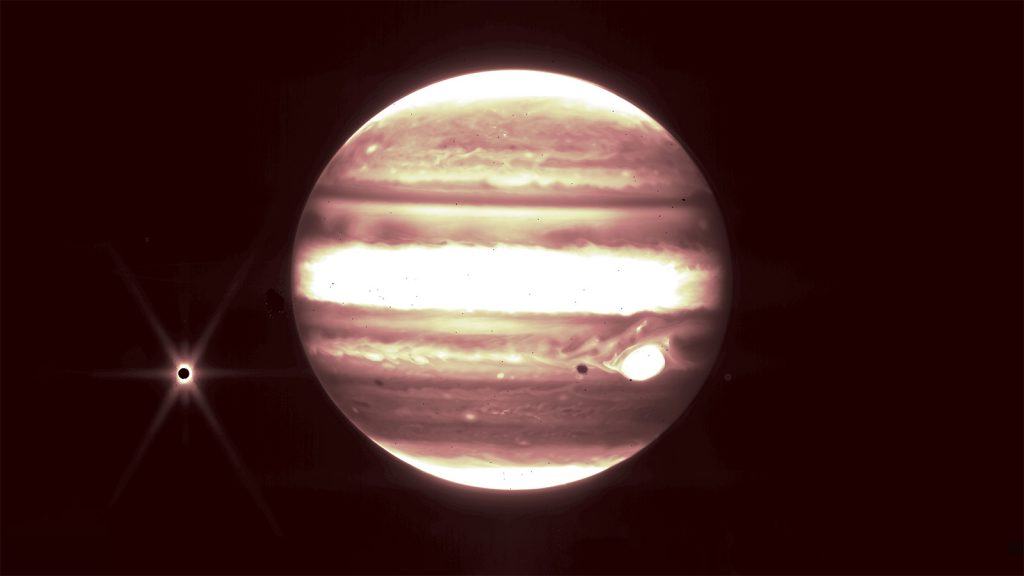
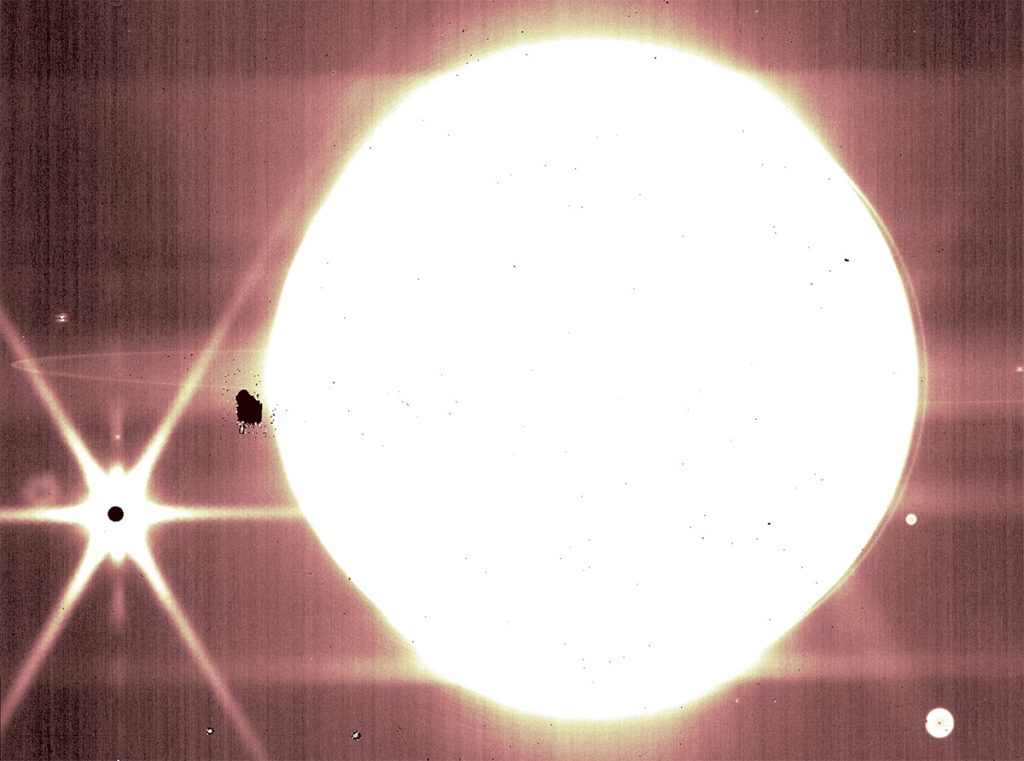
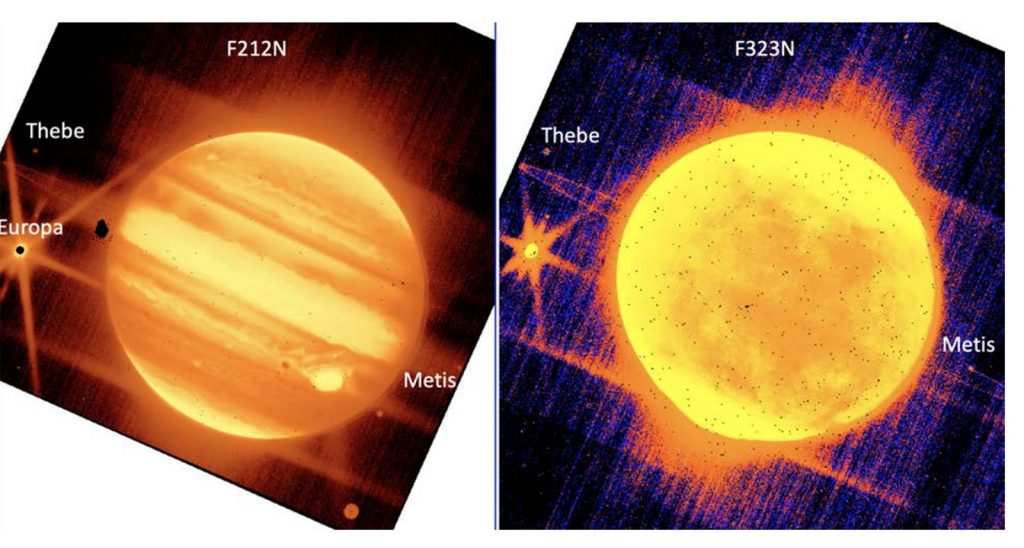
Unique Detectors that Make the James Webb Space Telescope Possible
Teledyne photon detectors are a significant part of making this level of infrared imaging possible. The JWST uses fifteen 2048×2048 pixel HAWAII-2RG™ (H2RG) detector arrays, a state-of-the-art readout integrated circuit for infrared instrumentation in ground-based and space telescope applications, specifically in the NIRCam, NIRSpec, and FGS. In total, Teledyne Imaging Systems provided arrays for 75% of JWST instruments, comprising 96% of the telescope’s infrared pixels.
Teledyne Imaging is known for producing the highest performance Focal Plane Arrays (FPAs) using Molecular Beam Epitaxy (MBE) technology to grow HgCdTe detectors. The unique material properties of HgCdTe enable the detectors to be tuned to sense specific wavelengths. Teledyne’s infrared FPAs are used in the Hubble telescope, JWST, and the upcoming Nancy Grace Roman space telescope.
“I am so pleased NASA released these high-quality images of Jupiter! I think the instruments on the JWST have actually exceeded expectations. It’s so impressive that we can see such detail from the planet itself in the same image as Jupiter’s rings, satellites, and even other galaxies in the background.”
Dr. James Beletic, President, Teledyne Imaging Sensors
JWST Is Just Getting Started
As we described above, the Jupiter images were really just a test. One of the primary missions of the JWST is to look at planets further away. That data has only just now started arriving.
On August 25th, 2022, NASA reported that JWST had captured the first clear evidence for carbon dioxide in the atmosphere of a planet outside the solar system. This observation provides evidence of a gas giant (one slightly larger than Jupiter but much less dense) orbiting a Sun-like star 700 light-years away. Initial data has provided insights into the composition and formation of the planet, including the presence of carbon dioxide. This finding indicates that carbon dioxide (a key ingredient for life as we understand it) will be detectable in the thinner atmospheres of smaller rocky (Earth-like!) planets.
The research team used JWST’s Near-Infrared Spectrograph (NIRSpec) for its observations of WASP-39b. In the resulting spectrum of the exoplanet’s atmosphere, a small hill between 4.1 and 4.6 microns presents the first clear, detailed evidence for carbon dioxide ever detected in a planet outside the solar system.

What will it look like? We’ll need to be patient.



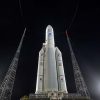 On the Way Up: How the James Webb Space Telescope Will Use Infrared to Study the Early Universe
On the Way Up: How the James Webb Space Telescope Will Use Infrared to Study the Early Universe 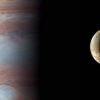 Two New Missions to Unlock the Secrets of Jupiter’s Largest Moons
Two New Missions to Unlock the Secrets of Jupiter’s Largest Moons 